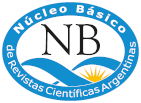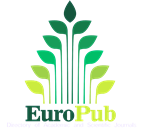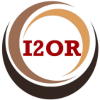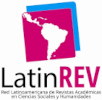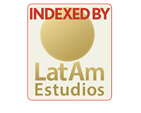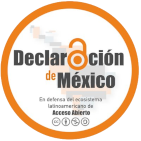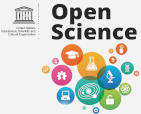Políticas de evaluación
Políticas de evaluación
y recomendaciones para revisión
Artilugio cuenta con arbitraje externo para garantizar la calidad de los contenidos. Los trabajos recibidos se evalúan bajo el sistema de revisión por pares académicos. Para las secciones Reflexiones / Artículos y Dossier, se utiliza la modalidad de revisión por pares doble ciego (double-blind peer review), que permite garantizar el anonimato entre autores/as y evaluadores/as. A los fines de mantener la confidencialidad de ambas partes, el Comité Editorial de Artilugio mediará en estas instancias. Para la sección Indeterminación, se utiliza la modalidad de revisión por pares ciega (single blind review). Más información al respecto, consultar Proceso de evaluación por pares.
A continuación, se detallan algunos aspectos a tener en cuenta por los/as evaluadores/as en su importante tarea, para que el proceso editorial de Artilugio cumpla con las normas internacionales de publicaciones académicas.
Los/as evaluadores/as deben actuar voluntariamente y con idoneidad dentro del campo de sus conocimientos y habilidades. Si considera que no es suficientemente experto o calificado para evaluar la temática abordada por un trabajo, debe manifestarlo al Comité Editorial luego de leer el resumen del mismo, antes de que le sea enviado el artículo completo. Asimismo, si existen conflictos de intereses (ya sea por colaboración, competitividad o diversas relaciones de conexión con los/as autores/as, instituciones vinculadas o financiadores del trabajo a evaluar) que impidan realizar la labor con imparcialidad, debe comunicarlo a los/as editores/as.
La evaluación realizada debe ser crítica, honesta y ética para que, en un tono respetuoso, constructivo y libre de opiniones personales o juicios de valor, aporte argumentos claros que permitan a el/la/los autor/a/es mejorar el trabajo. Es también importante que puedan identificar y aportar, en caso de ser necesario, publicaciones o referencias relevantes que no hayan sido citadas y que deban incluirse en el trabajo.
Deben siempre respetar el anonimato del arbitraje por pares ciegos, evitando averiguar la identidad autoral del artículo evaluado para que esto no influya positiva o negativamente en su decisión y dictamen. De la misma forma, es importante que se mantenga total confidencialidad relacionada con el proceso editorial y sobre todo en relación con los artículos evaluados, no pudiendo usar o difundir datos, teorías o cualquier información que contengan los trabajos entregados para su evaluación, hasta que los mismos se hayan publicado.
Si el/la evaluador/a cree que existe la posibilidad de algún tipo de fraude, si partes sustanciales del trabajo ya han sido publicadas, o si detecta cualquier similitud sustancial entre el trabajo y otra publicación de la que se tenga conocimiento (auto-plagio o plagio), debe notificarlo de manera confidencial al Comité editorial y no compartir la información con otras personas.
Una vez realizada la evaluación, se deberá emitir un veredicto sobre el trabajo, en base a la rúbrica de evaluación presente en el formulario, pudiendo ser: aceptado; aceptado con modificaciones; o rechazado.
Es importante cumplir con los plazos estipulados por el Comité editorial de Artilugio para realizar las evaluaciones. En caso de requerir otros tiempos, debe comunicarse con el/la editor/a para acordar posibilidades.
La participación de evaluadores/as en la revisión de pares será ad honorem y se espera que sea asumida como un pacto de reciprocidad académica, en el que se intenta aportar de manera constructiva a fortalecer (y validar) la investigación y los aportes de otros colegas dentro del campo de las artes.
Por último, es muy importante que los/as evaluadores/as conozcan y acepten el código de ética de la revista.
Criterios académicos a tener en cuenta
Es importante que los/as evaluadores/as tengan claro que las contribuciones recibidas deben ser trabajos originales e inéditos provenientes de cualquier campo de las artes en general. Se deben contemplar los siguientes aspectos:
- claridad conceptual, coherencia formal y metodológica;
- capacidad de síntesis, correcta escritura y utilización del lenguaje específico;
- abordaje singular en relación con el enfoque de la revista y el eje propuesto en la convocatoria;
- responsabilidad ética en la información y/o datos aportados;
- relevancia de las problemáticas, reflexiones, procesos y propuestas, en línea con los debates actuales de las disciplinas artísticas o el campo de pensamiento en el que se inscribe.
Para realizar la evaluación, se deben seguir los pasos pautados en el formulario, respondiendo todas las preguntas y campos, incluidos los datos personales del evaluador/a. Posteriormente se debe remitir a el/la editor/a el archivo del formulario completo, con el veredicto final.
Es importante saber que los comentarios vertidos en el formulario, o parte de ellos, pueden ser remitidos a el/la autor/a sin develar la identidad de la fuente.
Si se detectan posibles prácticas irregulares, faltas éticas, plagio, auto-plagio o cualquier tipo de fraude que atente contra el código de ética de la revista, se deberá informar al Comité editorial de la revista para que siga los procedimientos según cada caso, con el fin de aclarar y resolver el conflicto o irregularidad.
_____________________________________
FORMULARIO DE EVALUACIÓN
Secciones REFLEXIONES y DOSSIER
Le pedimos, por favor, complete el siguiente formulario atentamente. Sus comentarios serán enviados en forma anónima a los/as autores/as y ayudarán a que el artículo sea mejorado, en caso de ser necesario.
Título del artículo: ____________________________________________
A- EVALUACIÓN
Realice la evaluación del artículo teniendo en cuenta: la relevancia del tema y la bibliografía; adecuación del título, resumen y palabras claves y adecuación lingüística y a la línea editorial de la revista; desarrollo y adecuación del tema y metodología.
Los siguientes puntos se ofrecen como guía para detallar aquellos aspectos que sean relevantes destacar según la particularidad de cada artículo. Ya sea para valorar, solicitar modificaciones o argumentar un rechazo, la descripción de estos puntos le dará herramientas al autor/a para comprender su evaluación.
1-Relevancia del tema y originalidad
¿El tema es de relevancia de acuerdo con el eje de la convocatoria que se presenta? ¿Constituye un aporte a la misma? ¿Presenta un planteo general o perspectivas específicas? Si no, indique las dificultades.
¿Es un artículo que realiza contribuciones a su campo en relación con las problemáticas y/o debates actuales de su disciplina? Si no, indique las dificultades.
2-Estructura formal
¿El trabajo cumple con las Directrices para autores/as? Si no, indique las dificultades.
¿El trabajo cumple con los requisitos formales de redacción, en lo referido a organización, coherencia, redacción, referencias bibliográficas –abarcando textos ensayísticos, de índole académica, de divulgación y de producción de conocimiento sobre las artes–? Si no, indique las dificultades.
Título. ¿Es claro y describe claramente el artículo?
Resumen. ¿Refleja fielmente el contenido del artículo? Si no, indique las dificultades.
Palabras claves. ¿Describen los conceptos fundamentales del artículo?
3-Tratamiento teórico, metodológico y reflexivo
Introducción. ¿Cuál es el propósito del artículo? ¿Describe lo que el/la autor/a esperaba lograr con precisión, y claramente indica el problema que se investiga, el marco teórico, los objetivos y lo contextualiza dentro de otras investigaciones? Si no, indique las dificultades.
Desarrollo. ¿Tiene una estructura conceptual coherente? ¿Desarrolla adecuadamente lo que se propone en el resumen o introducción? ¿Logra resultados claramente establecidos y en una secuencia lógica? Si no, indique las dificultades.
Conclusión/Discusión. ¿Las conclusiones presentadas parecen sólidas? ¿Se indica cómo los resultados se refieren a la temática y a investigaciones anteriores? ¿Apoya o contradice teorías anteriores? ¿Explica en este apartado si esta investigación hace aportes al corpus de conocimiento del campo de estudio o disciplina abordada?
Referencias. ¿Las referencias y bibliografía son relevantes, están actualizadas, parecen suficientes? Si no lo es, indique las dificultades.
B- OBSERVACIONES
Incluya recomendaciones y sugerencias para que los/as autores/as puedan trabajar los aspectos antes señalados.
C- POSIBLES FALTAS ÉTICAS
Si considera que pueden existir prácticas irregulares, faltas éticas, plagio, auto-plagio (ver las Políticas sobre plagio) o cualquier tipo de fraude que atente contra el código de ética de la revista, explicítelas en este apartado, describiendo el tipo de falta y los argumentos por los que considera que es así. Esto será evaluado e investigado por el Comité editorial de acuerdo con los procedimientos del Committee on Publication Ethics (COPE).
D-VEREDICTO
Indique su apreciación general, marcando con una “x” el cuadro apropiado:
- ___ ACEPTADO: el trabajo puede ser publicado como está, con solo revisiones técnicas y estilísticas menores, propias del proceso normal de edición.
- ___ ACEPTADO CON OBSERVACIONES: el trabajo podrá ser publicado después de ser revisado y corregido por el/la autor/a, teniendo en cuenta los comentarios del referato.
- ___ RECHAZADO: el trabajo debe ser rechazado, ya que tiene falencias importantes y/o no cumple con los requisitos y criterios de evaluación.
E- DATOS EVALUADOR/A
(Esta información luego será borrada en caso de reenviar a los/as autores/as).
Nombre/s y Apellido/s:
Ciudad y país de residencia:
Último nivel alcanzado en su formación académica (título obtenido e Institución otorgante del mismo):
Pertenencia Institucional:
Cargo/s actual/es y/u otra información que considere importante mencionar:
_____________________________________
FORMULARIO DE EVALUACIÓN
Sección INDETERMINACIÓN
Le pedimos, por favor, complete el siguiente formulario atentamente. Sus comentarios serán enviados en forma anónima a los/as autores/as y ayudarán a que el artículo sea mejorado, en caso de ser necesario.
Título de la obra: ____________________________________________
A- EVALUACIÓN
Los siguientes puntos se ofrecen como guía para detallar aquellos aspectos que sean relevantes destacar según la particularidad de cada obra. Ya sea para valorar, solicitar modificaciones o argumentar un rechazo, la descripción de estos puntos le dará herramientas al autor/a para comprender su evaluación.
1- Coherencia formal, conceptual y estética
Articulación coherente entre texto explicativo, imágenes, piezas escritas, audiovisuales y/o sonoras:
¿El texto permite comprender la propuesta de la obra artística, dando cuenta del contexto de producción de la obra, del desarrollo procesual y/o conceptual de la misma?
¿Las imágenes, piezas escritas, audiovisuales y/o sonoras dan cuenta de un desarrollo procesual y/o conceptual? ¿Poseen coherencia formal y estética?
2- Aporte al campo artístico en el que se inscribe
¿Es una propuesta novedosa en sus planteos? ¿Hace contribuciones en relación a las problemáticas y/o debates actuales del campo artístico en el que se inscribe?
3- Abordaje singular sobre el eje propuesto de la convocatoria
¿La propuesta artística es de relevancia de acuerdo al eje de la convocatoria que se presenta? ¿Constituye un aporte al mismo? ¿Presenta un planteo general o una apropiación particular del eje?
B- POSIBLES FALTAS ÉTICAS
Las propuestas deben estar realizadas especialmente para esta convocatoria o, de lo contrario, ser inéditas, no habiéndose publicado previamente ni tampoco encontrarse sometidas a evaluación de otras publicaciones. Si la obra se ha presentado con anterioridad en muestras, reuniones artísticas o académicas, deben reseñarse los datos de la misma.
C- VEREDICTO
Indique su apreciación general, marcando con una “x” el cuadro apropiado:
- ___ ACEPTADO: el trabajo puede ser publicado como está, con solo revisiones técnicas y estilísticas menores, propias del proceso normal de edición.
- ___ RECHAZADO: el trabajo debe ser rechazado ya que tiene falencias importantes y/o no cumple con los requisitos y criterios de evaluación.
D- DATOS EVALUADOR/A (Esta información luego será borrada en caso de reenviar a los/as autores/as).
Nombre/s y Apellido/s:
Ciudad y país de residencia:
Último nivel alcanzado en su formación académica (título obtenido e Institución otorgante del mismo):
Pertenencia Institucional:
Cargo/s actual/es y/u otra información que considere importante mencionar:



